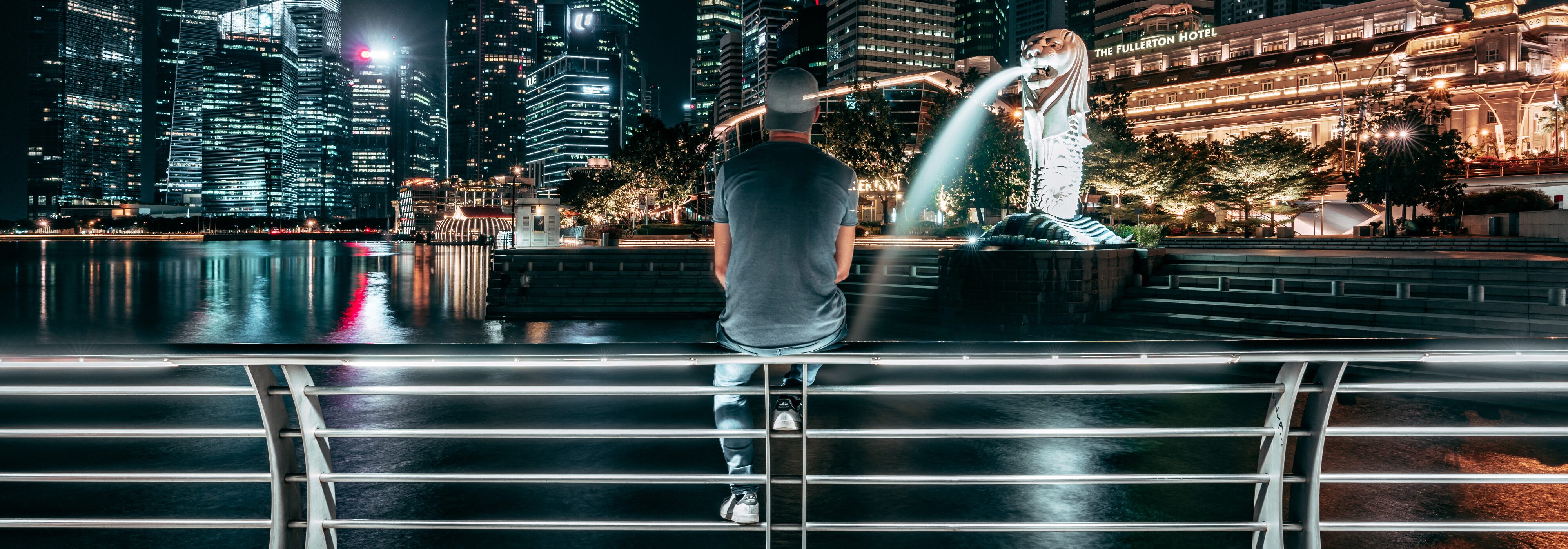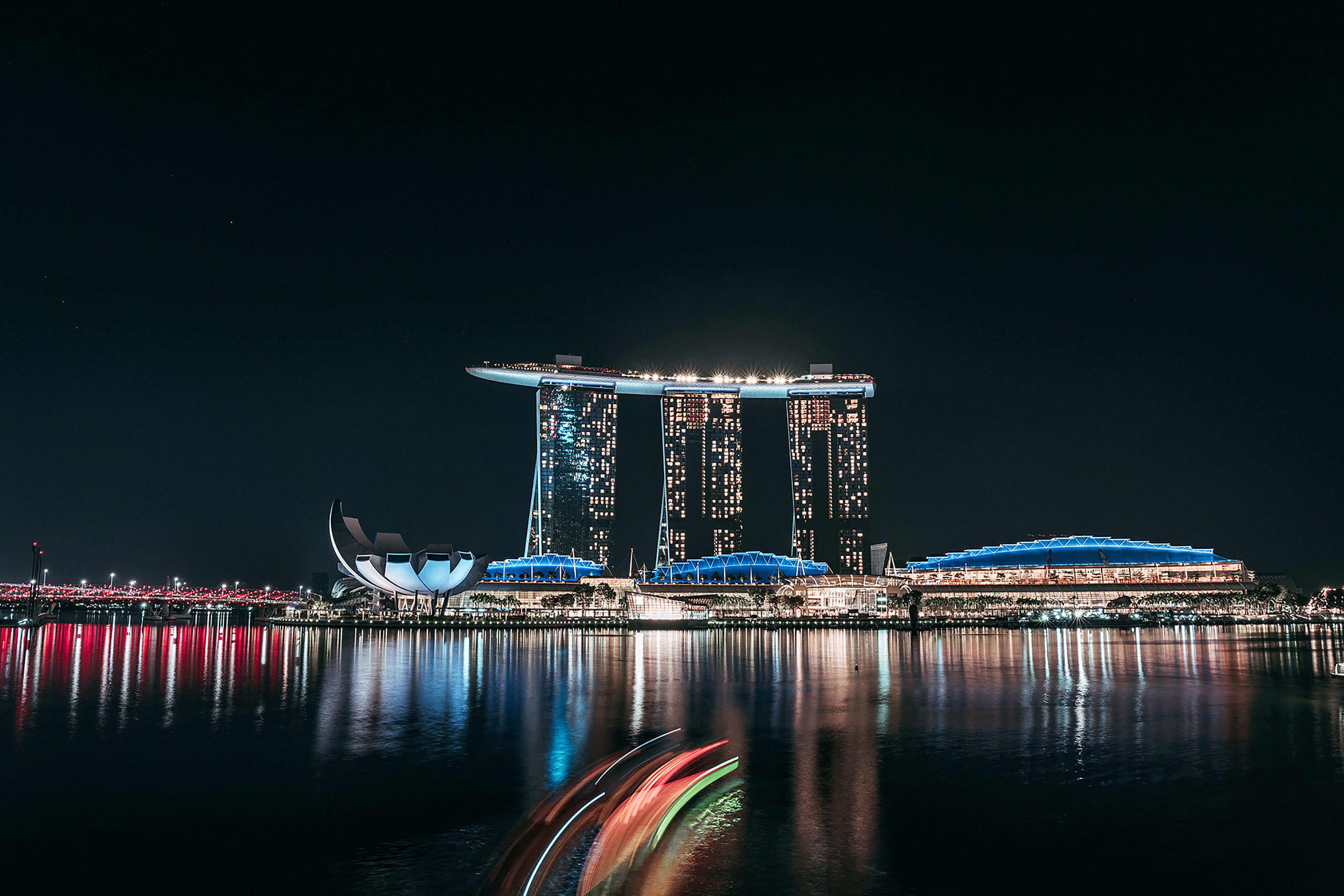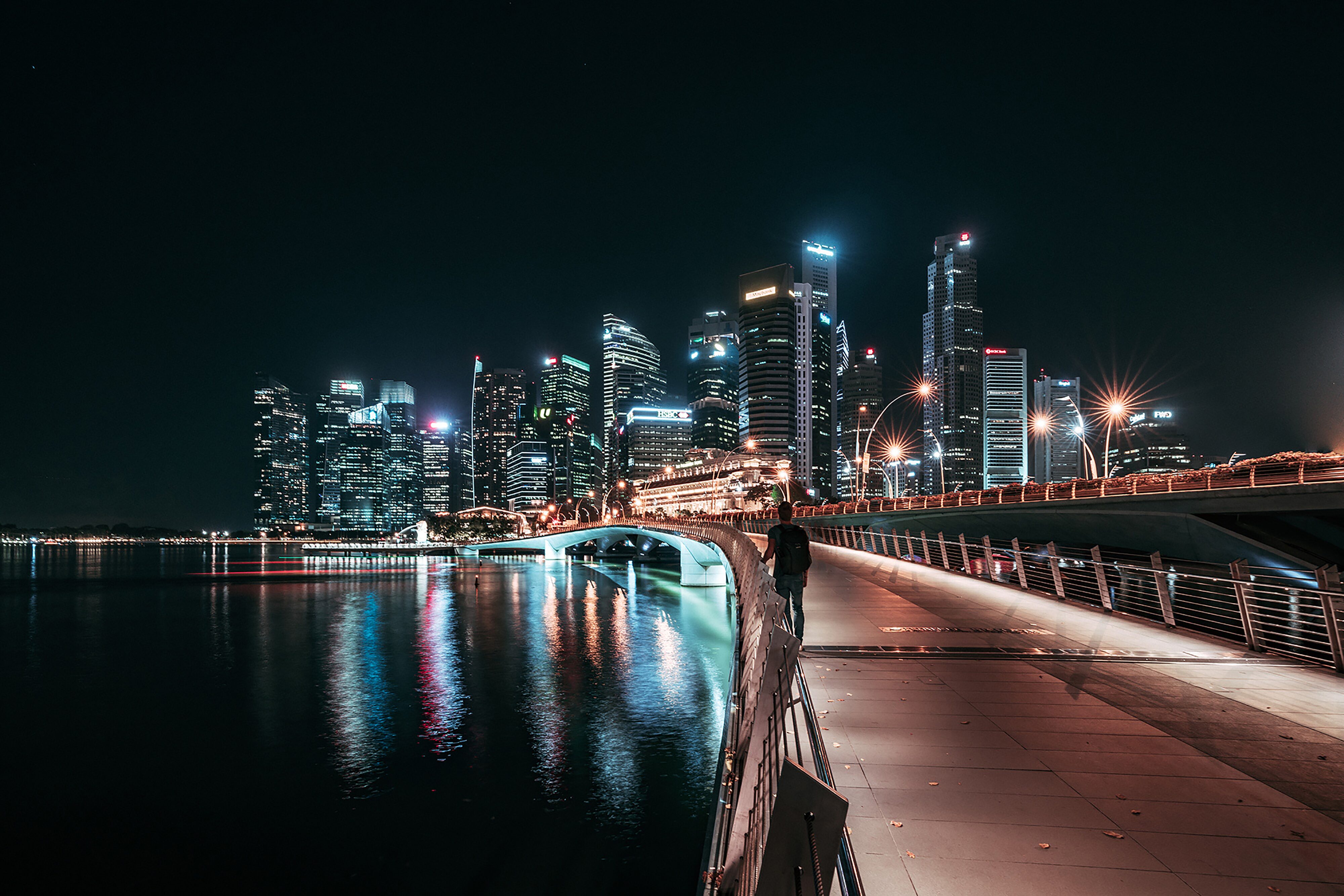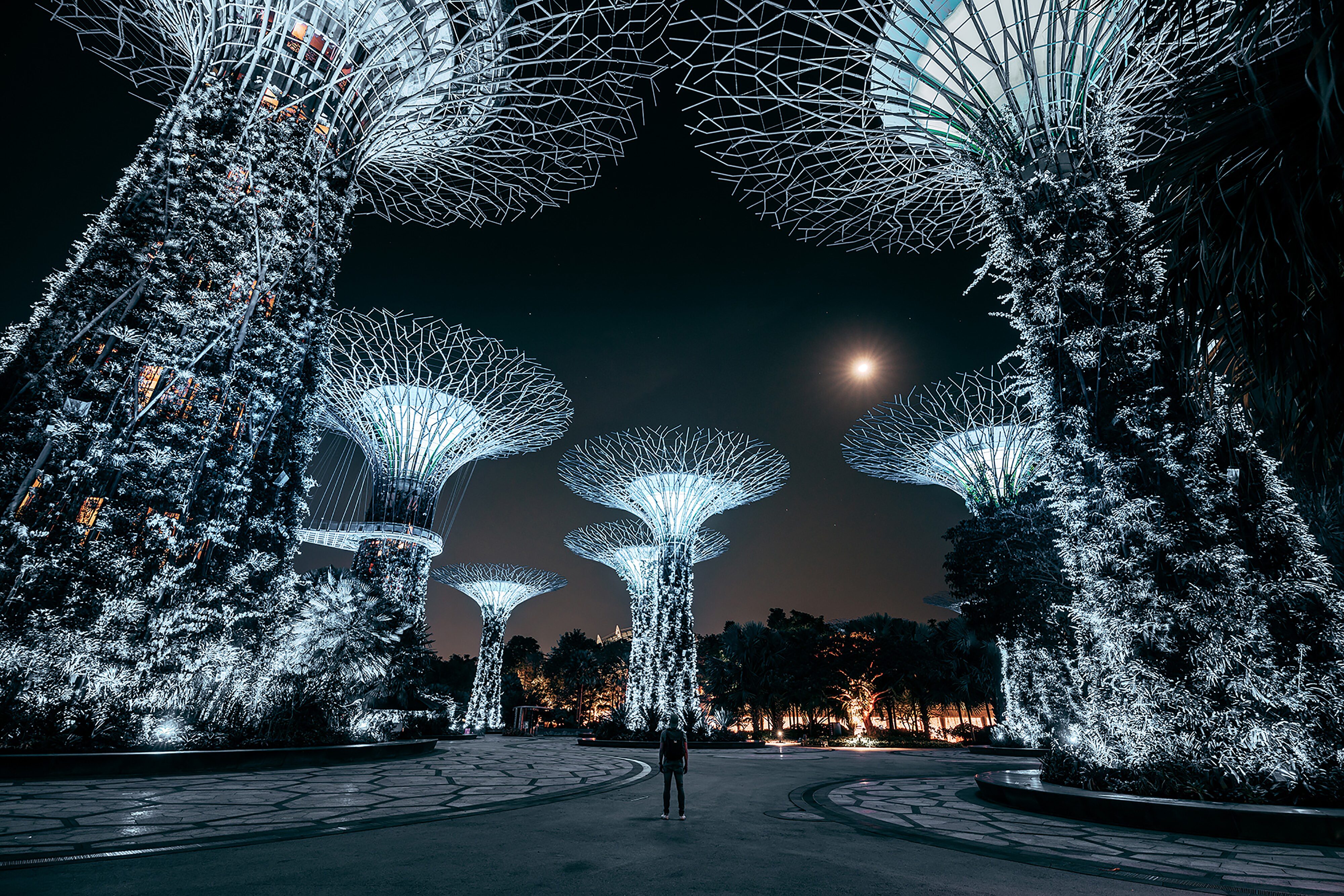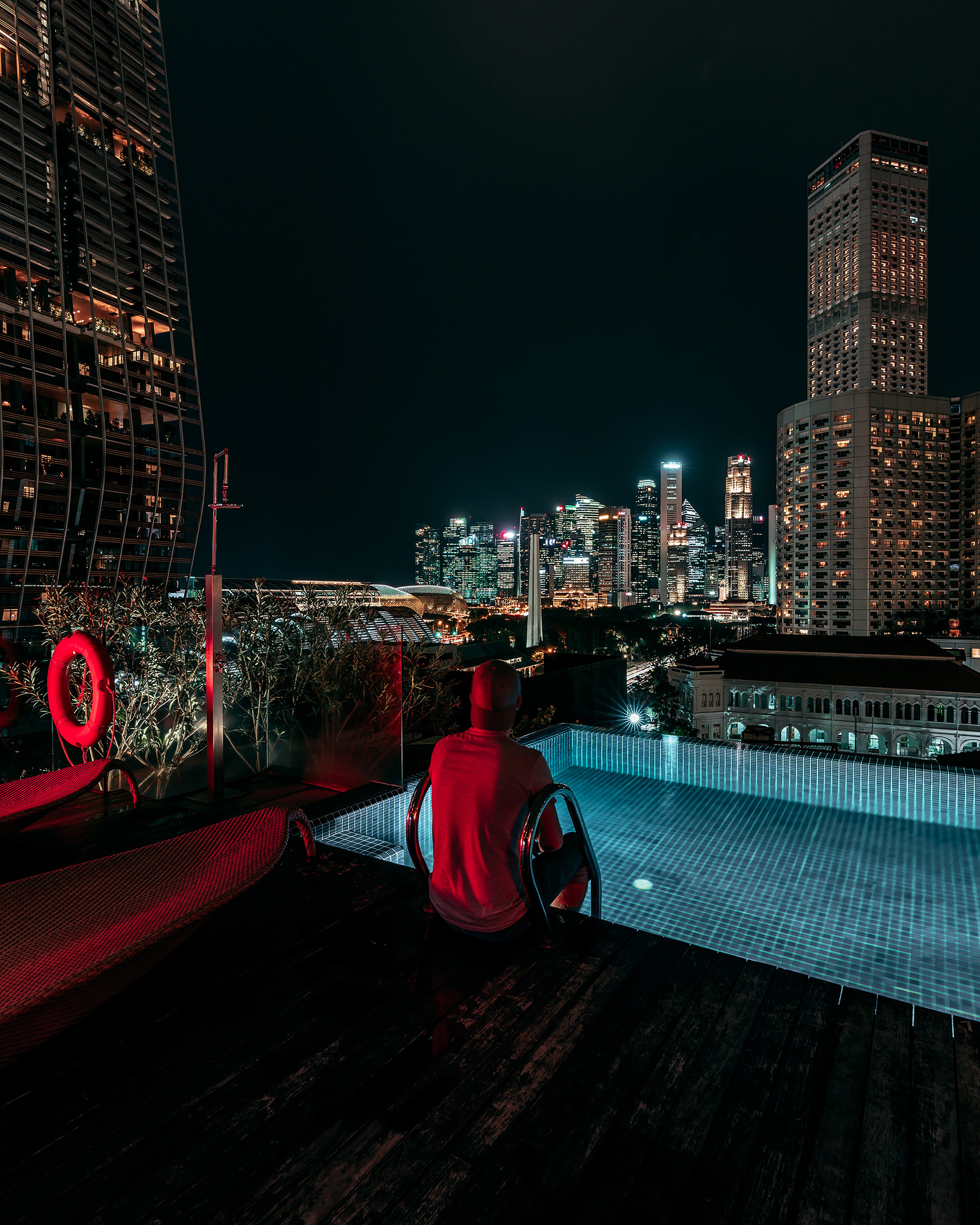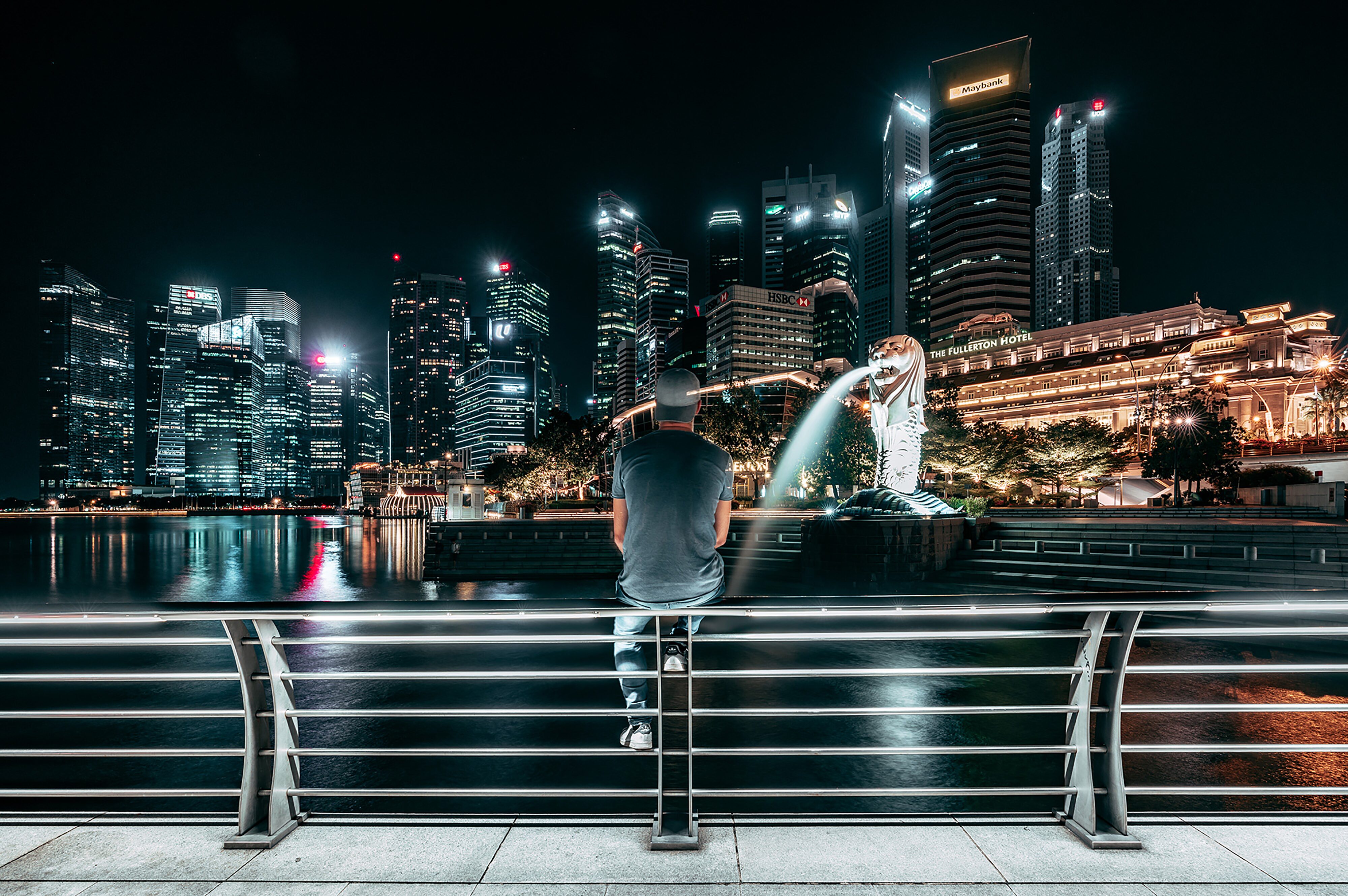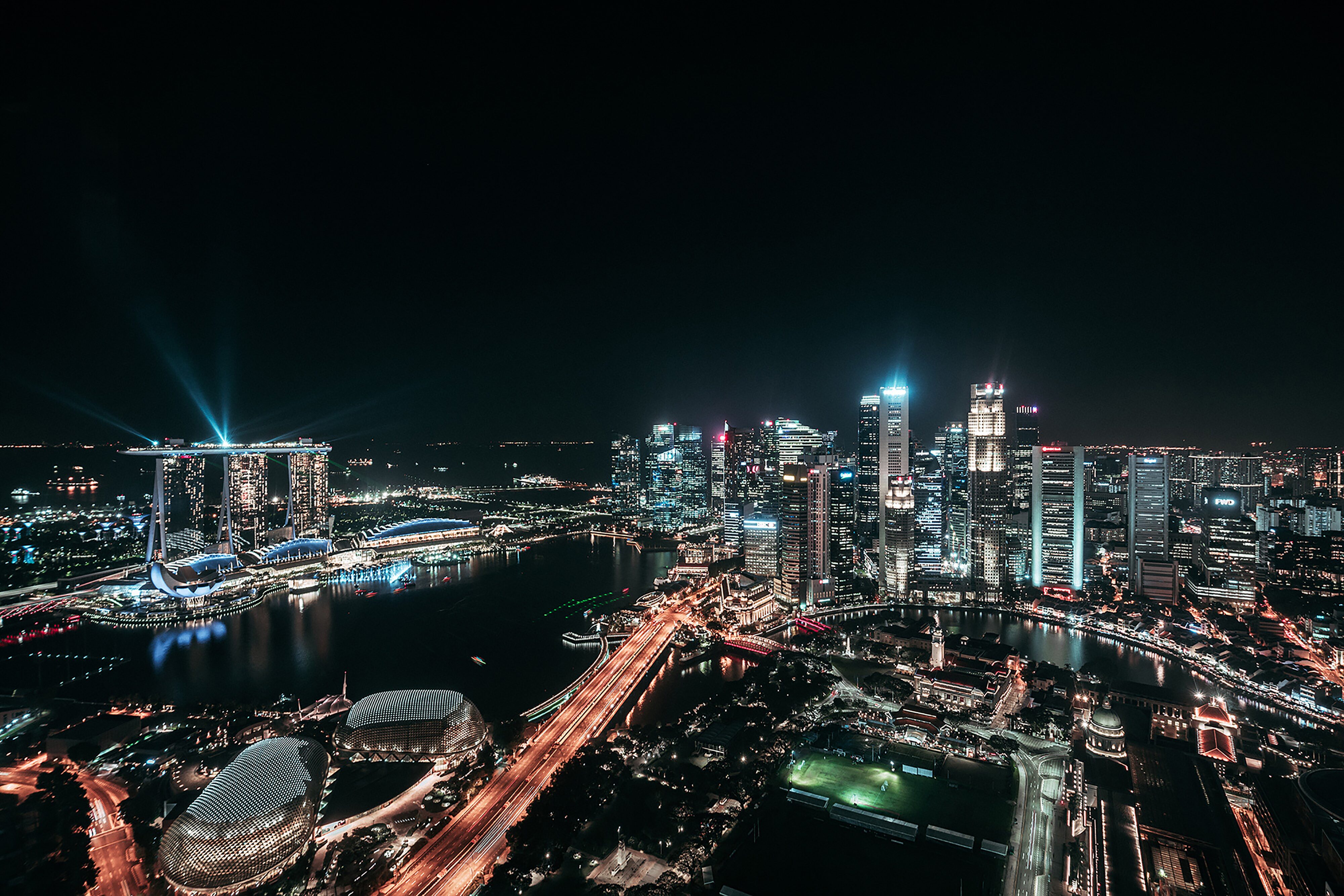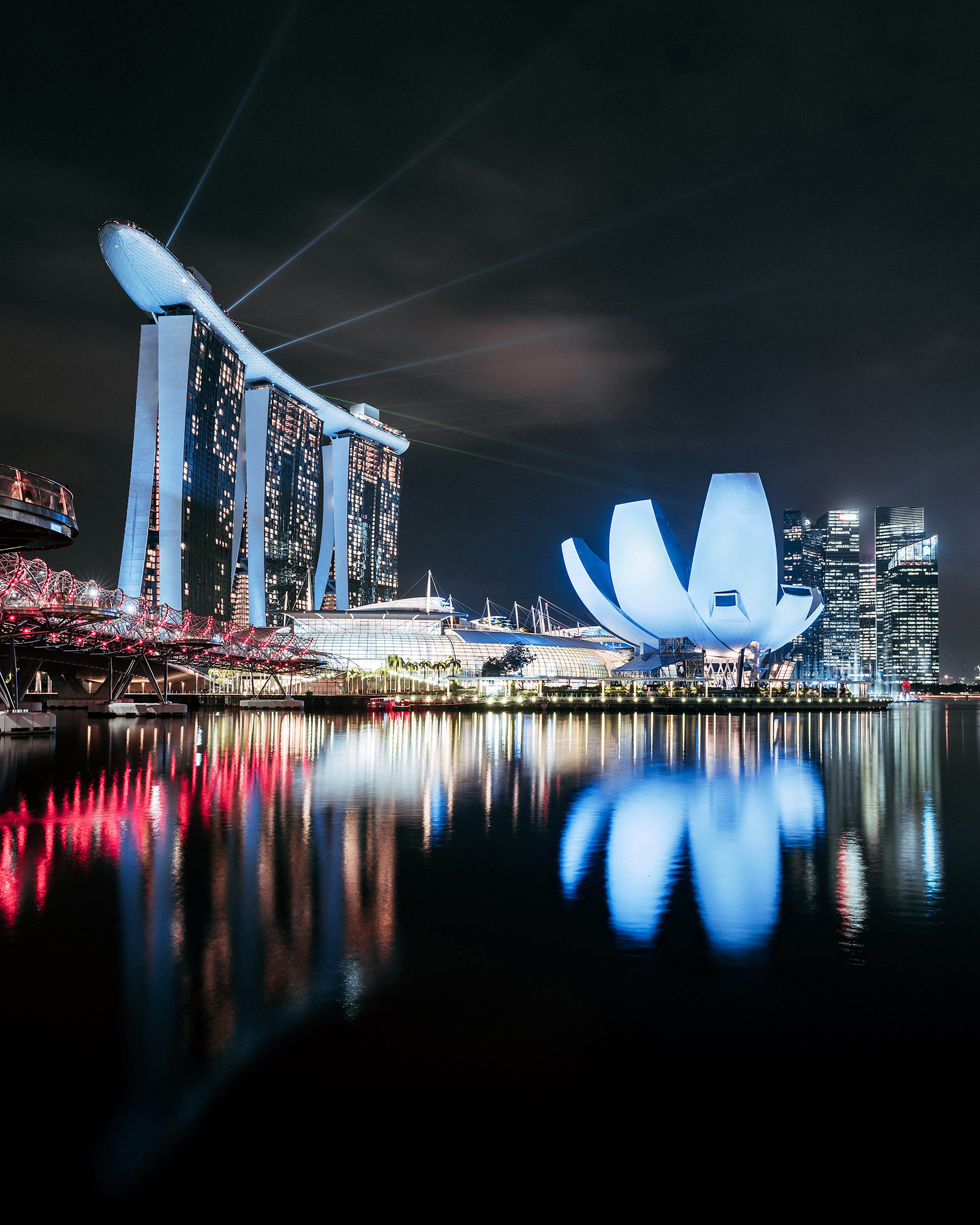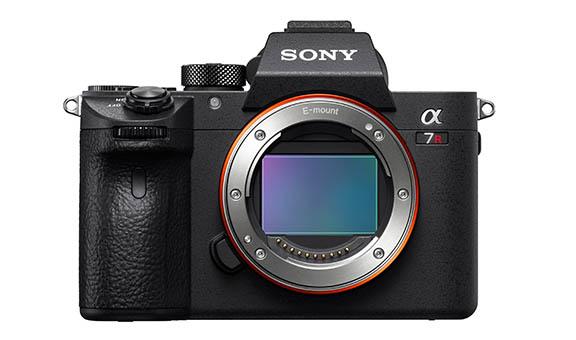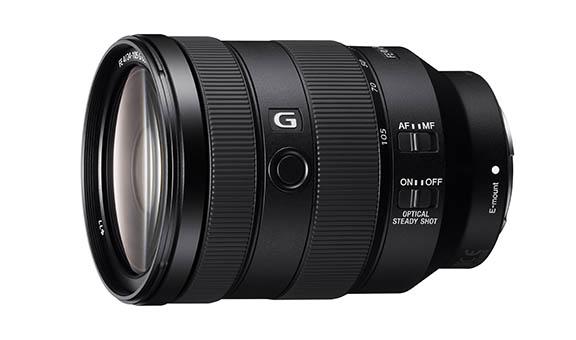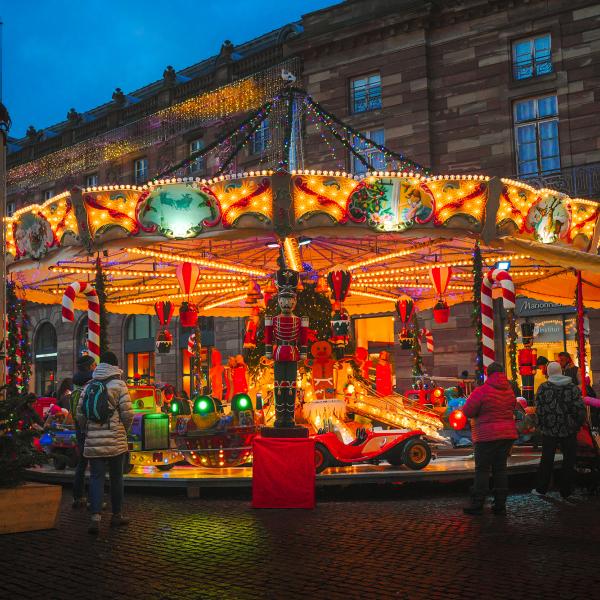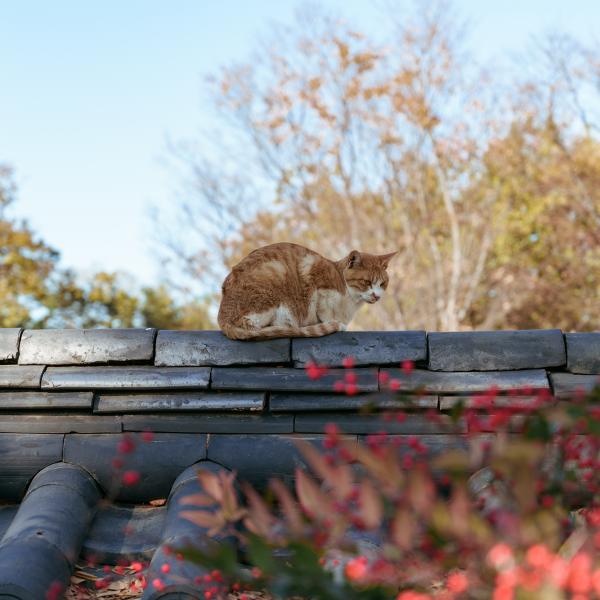The Night Lights of Singapore
Whilst for many of us an open top bus and a multilingual headset may be the best way to explore a new city, for Guillaume Ruchon a camera, a tripod and his two feet was all that he needed.
On his most recent trip to Singapore, he explains that the first thing he did when he arrived was to escape into the city streets with his camera and tripod in hand, “I decided to take my gear and my tripod to walk around the streets by night so I could fully discover the city”.
There was one area that Guillaume was quickly drawn to - the Marina, with its modern facades and bright lights - it was the perfect location to set down the legs of his tripod and start shooting.
“On other trips I would usually visit blogs or use Instagram to hunt out some of the best locations to photograph, but for this trip I wanted to just walk around the streets and observe”, he explains.
“I soon discovered that the architecture of Singapore is amazing!” he continued, “I mainly stayed around the Marina area because I wanted to capture the skyline, the Marina Bay Sands, the Supertree Grove and, of course, play with the reflections of the water.”
Whilst the destination may have been the age-old advice for getting the best images, when it comes to taking really great photos, it always comes down to capturing light.
“Light is absolutely key and a tripod is essential to keep your camera still, so you can capture long exposure” he explains, “there is also a decision to be made when it comes to white balance, as different light sources produce different coloured light.”
For Guillaume, the colours in a scene are another way we can express ourselves, “when it comes to telling a story within a single image we can change the feeling in an image depending on the warm or cool colours that we use when adjusting the white balance.”
Travelling to Singapore along with Guillaume was his trusty Sony Alpha 7R III, FE 16-35mm f/2.8 and 24-105mm f/4 G OSS lenses.
Guillaume says, “the FE 16-35 f/2.8 GM lens is my number one lens for architecture and landscapes. It’s not too wide and there is very low distortion. When zooming in to 35mm you can still shoot at f/2.8 and get excellent results in terms of sharpness and definition.”
Like many other photographers, the key reason for the Sony Alpha 7R III is the incredible 42.2 megapixel resolution. “I can’t live without it” says Guillaume “the detail is awesome for editing and also when cropping.”
With so much detail it can be tempting to set the highlights and shadows to -100 and +100 to show as much as possible, but Guillaume advises those starting out to learn how to use tone curves in your editing software to adjust the brightness and contrast. “It is much more creative than simply adjusting the highlights and shadows, but it also harder to learn how to use successfully”, he says.
The high resolution and dynamic range aren’t the only features of the Alpha 7R III that help when shooting cityscapes at night. “One thing that really helped me when shooting at night in Singapore was the 12.4x magnification”. For Guillaume it helps him to focus accurately in lowlight through the electronic viewfinder. “Using magnification in combination with Focus Peaking helps me to make doubly sure that my images are perfectly sharp and in focus.”
Every city presents a new opportunity for Guillaume to explore and take images at night, but isn’t there a risk of getting bored? “Haha, never!” he says, “the weather and seasons are always changing and lighting often does too. Of course, my pictures also change, as I evolve and change my style. There is always something new to discover!”
Products
Featured
This article was originally published on sony.co.uk/alphauniverse
